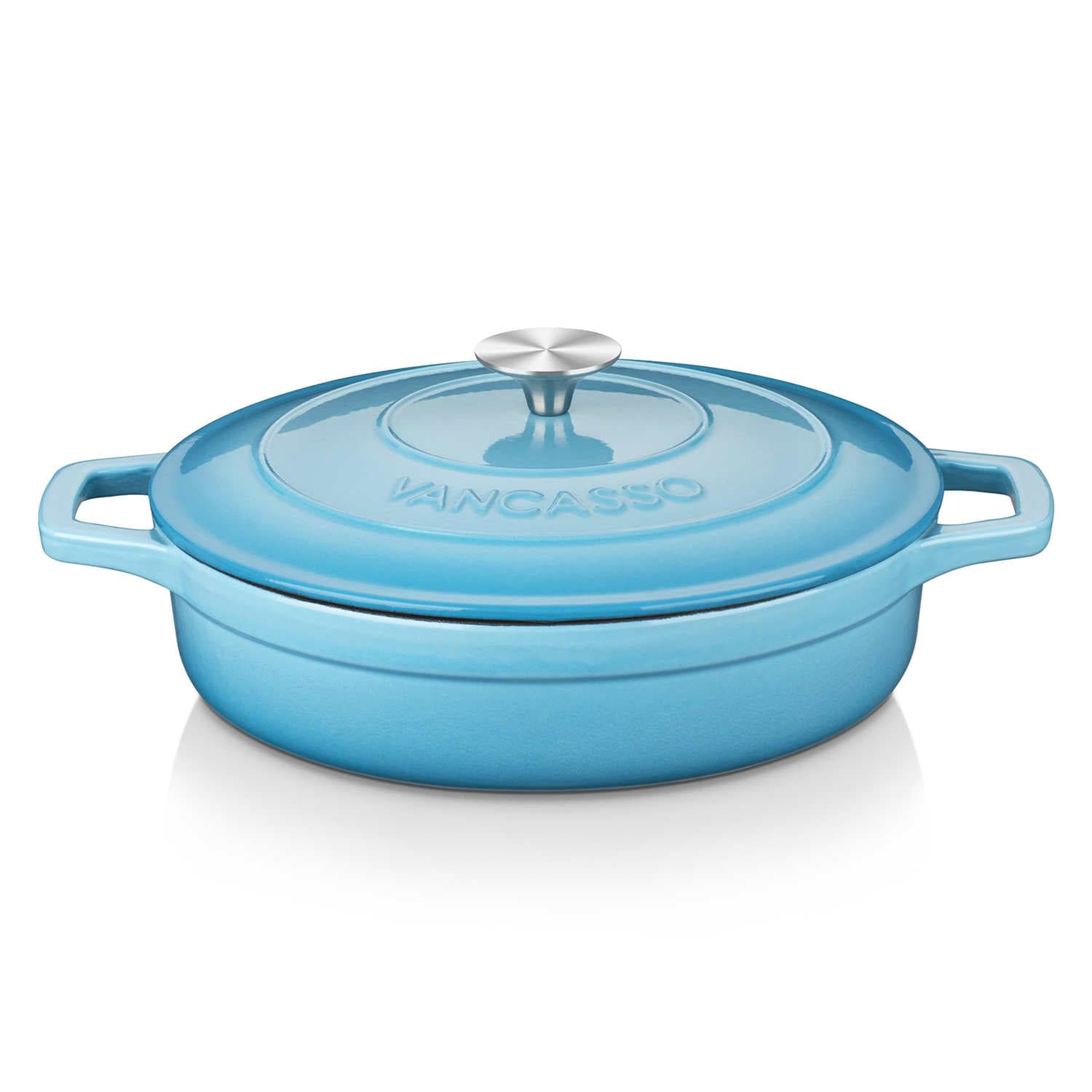Unlock the Secrets of the Cast Iron Dutch Oven: Your Kitchen's New Best Friend!
The cast iron Dutch oven is a timeless piece of cookware that has been cherished in kitchens for centuries. Originating from Europe in the 18th century, this versatile pot has made its way into countless homes, becoming a staple for both professional chefs and home cooks alike. Its unique construction allows it to retain and distribute heat evenly, making it an essential tool for a variety of cooking methods. In recent years, the cast iron Dutch oven has seen a resurgence in popularity, thanks to the growing interest in traditional cooking techniques and the farm-to-table movement. In this article, we will delve into what a cast iron Dutch oven is, explore its numerous uses, and highlight the benefits that come with incorporating this remarkable cookware into your culinary repertoire.

What is a Cast Iron Dutch Oven?
A cast iron Dutch oven is a heavy-duty pot, typically made entirely of cast iron, with a tight-fitting lid. This cookware is renowned for its ability to retain heat, making it perfect for slow-cooking, stewing, and baking. The construction of a Dutch oven often includes a smooth, enameled interior that enhances its non-stick properties and makes it easier to clean. Dutch ovens come in various shapes and sizes, from small 2-quart models ideal for side dishes to large 7-quart pots that can accommodate family-sized meals. There are also different styles available, such as the classic round shape and the more modern oval shape, which can fit larger cuts of meat. Regardless of the type you choose, a cast iron Dutch oven stands out for its durability and ability to transition from stovetop to oven seamlessly.
Uses of a Cast Iron Dutch Oven
The versatility of a cast iron Dutch oven is one of its most appealing features. It can be used for a variety of cooking methods, such as baking, braising, frying, and even roasting. You can whip up a hearty beef stew, prepare a flavorful chili, or bake a crusty loaf of bread—all in the same pot! One personal anecdote comes from a friend who loves to make her grandmother's famous baked beans. She swears by her Dutch oven for this recipe, as it allows the beans to cook slowly and absorb all the rich flavors. Other dishes that shine in a Dutch oven include pot roast, coq au vin, and even desserts like cobblers and crumbles. The ability to cook both on the stovetop and in the oven makes the Dutch oven an incredibly useful tool for any cooking enthusiast.
Benefits of Using a Cast Iron Dutch Oven
There are numerous benefits to using a cast iron Dutch oven, starting with its exceptional heat retention. When properly preheated, it can maintain a consistent temperature, ensuring even cooking every time. This feature is particularly advantageous for dishes that require slow cooking or braising, where even heat is critical. Additionally, a Dutch oven is incredibly durable; with proper care, it can last for generations, often becoming a family heirloom. Health-wise, cooking with cast iron can add trace amounts of iron to your food, which is beneficial for those who may be iron deficient. Furthermore, cast iron cookware is eco-friendly as it is made from natural materials and can be used on any heat source, including open flames, making it perfect for camping and outdoor cooking. All these factors contribute to the growing popularity of the cast iron Dutch oven as a go-to kitchen essential.
Care and Maintenance of Your Dutch Oven
To keep your cast iron Dutch oven in top condition, proper care and maintenance are essential. First and foremost, seasoning your Dutch oven regularly will help maintain its non-stick surface and prevent rust. To season, simply apply a thin layer of vegetable oil to the interior and heat it in the oven for an hour. Cleaning your Dutch oven requires a gentle touch; avoid using harsh detergents or soaking it in water. Instead, use warm water and a soft sponge to clean it after use. If food residue is stubborn, a mild abrasive like kosher salt can help without damaging the surface. When storing your Dutch oven, place a paper towel between the lid and pot to allow airflow and prevent moisture buildup. By following these care tips, you can ensure that your cast iron Dutch oven remains a reliable cooking companion for years to come.
Summary of Benefits and Uses
In summary, the cast iron Dutch oven is an invaluable addition to any kitchen. Its versatility in cooking methods, coupled with its durability and health benefits, makes it a worthwhile investment for anyone who enjoys preparing meals. From baking to slow cooking, the Dutch oven can do it all while adding a touch of rustic charm to your kitchen. As you explore the many uses and benefits of this remarkable cookware, consider adding a cast iron Dutch oven to your culinary arsenal. Embrace the opportunity to create hearty, flavorful dishes that will delight your family and friends!



